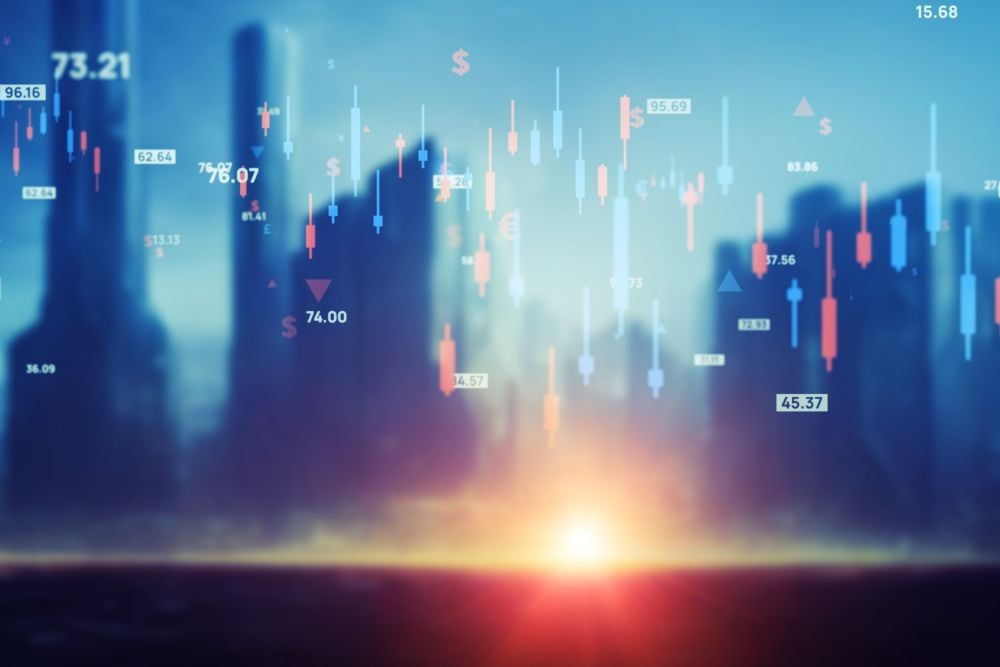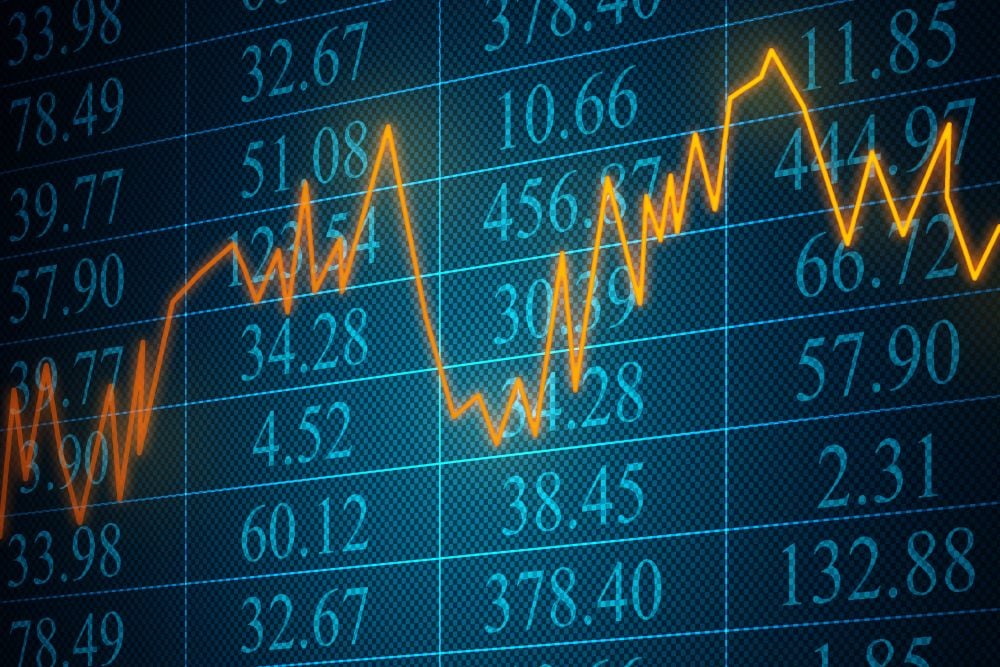 |
|
Financial markets have experienced a tremendous increase in volatility in recent weeks. While this is clearly worrying for investors, I do not believe it's a serious cause for concern.
In particular, the growth prospects for the US economy have not changed, and it has been market confidence in the US recovery that has really underpinned the five-year bull market in equities. I think that this bull market is still intact and the present weakness offers investors the opportunity to get on-board at attractive valuations.
Sharp and quickly escalating volatility of the kind we have seen in financial markets can be unnerving for investors. Yet while the tendency to do as others are doing can be a strong one, this is not the time to follow the herd and reduce equity allocations.
On the contrary, I believe the US-led bull market is still intact and this is a healthy mid-cycle correction that should set us up for positive returns in 2015. With valuations and dividend yields having become more attractive, this is an opportune time to increase exposure, particularly to the US, which I believe will continue to lead global stock markets.
Weighing up the source of volatility: USD
The catalyst for what is happening in global equity markets is the strengthening US dollar, which has appreciated significantly against other major currencies over the last few months. The issue is that when the world's reserve currency appreciates, it deflates other assets, particularly commodities such as oil which are priced in dollar terms. This is the inverse of what happened over 2003-2008 when a weaker dollar inflated commodities and helped to support emerging markets.
The dollar's appreciation is a result of ongoing structural improvements in the US, in particular the improvements in the fiscal and trade positions over the last few years. While these improvements have been occurring for some time, what has changed is the monetary policy backdrop. Up until recently, an environment of loose monetary policy over the last few years was effectively keeping a lid on dollar appreciation.
With the prospect of quantitative easing ending in the US and a possible rate rise some time next year, coinciding with an acceleration of quantitative easing in Europe in Japan, that lid has now been lifted. We could be in for a sustained and significant move higher.
The rise in the dollar reflects the fact that financial conditions are tightening. We've seen the tell-tale signs building up over recent months and weeks:
· Widening credit spreads and an increase in event risk in credit markets
· The underperformance of mid and small cap sectors since the second quarter
· Sharply weaker commodities markets, in particular, a collapse in the oil price
· Most recently, the impact has moved to global equity market indices, where market breadth started to deteriorate prior to the current weakness.
So where are we now?
I remain firmly of the view that the current five-year-long US equity market bull market remains intact and has further to run. The US economy continues to grow at a healthy pace and, importantly, despite five years of quantitative easing, there is little sign of inflationary pressure.
The structural improvements in the twin deficits are ongoing and will support further dollar appreciation. The collapse of hydrocarbon imports, thanks to the US shale revolution, has significantly improved the trade deficit, while the possibility of exports offers even further scope for repair. More important has been the improvement in the fiscal deficit which has shrunk from around 10% at the start of the Obama presidency to around 3% now. The present administration has reduced the profligacy of the Bush era and federal outlays have actually declined as a result of the cessation of two costly wars in Iraq and Afghanistan. As a result, I believe Obama may well end his presidency with a modest fiscal surplus - which will be an impressive turnaround by any standards.
I think the outlook for US earnings also remains positive. Some sceptics have been anticipating a mean reversion in profits. I disagree with this - I think profits can stay high supporting further valuation expansion. Over the last 12 years, we have seen a shift in the distribution of wealth in favour of companies and capital and away from labour. This relationship shows little signs of reversing.
We presently have a glut of savings in the global financial system. With policy interest rates near zero and bond yields near record lows, this wall of money effectively has no 'pricing power', forcing investors to put their money to work to achieve a decent return. Within a broad global asset class context, dividend-paying equities still look attractive versus other assets such as bonds, and should continue to attract inflows from investors. Indeed, with the S&P yielding more than the 10-year treasury and European markets yielding around 4%, I believe the equity income story will be the catalyst that stops the rout in markets as the persistent thirst for yield returns in earnest.
As financial conditions tighten, which markets will cope best?
I believe the US economy is going to deal with this issue quite easily. The case for the sustainability of the US economy, US earnings and US dividend growth remains robust and this will help to sustain global equity markets in the course of the next year or so. Although it might be difficult to believe today, with markets weak and the S&P sharply lower, I believe the US stock market will rally in 2015 and eclipse this year's September high.
However, what is good news for the US economy presents a hurdle for other markets and I think this is particularly true of emerging markets. In the last bull market of 2003-2008, emerging markets had the benefit of two key tailwinds; the first was the rapid emergence of China and its double-digit growth; the second was the debasement of the US dollar and the concurrent rise in commodity prices. The export-led model that worked so successfully for many emerging markets in the last decade has now run aground. Individual emerging markets can succeed if they embrace structural reform and successfully adopt a more domestically-orientated economic agenda.
Europe appears to be stuck in the middle; on the one hand, structural challenges remain, real growth is hard to come by and we are seeing a widening of credit spreads in the periphery. On the other hand, a weaker Euro will be a significant support, particularly in combination with the falling oil price and weaker commodity prices generally. Together, these factors could give a modest boost to activity in 2015. A lot of foreign money supported a sentiment-driven rally in European markets earlier in the year and a more sober judgment is now being levied. Given the adjustment that has taken place in valuations I am as positive on Europe as I have been for some time.
No fundamental change in bull market leadership
Investors should not be unnerved by the recent volatility. Fundamentally, I think the positive growth prospects for the US economy will ensure the five-year-long US equity bull market has further to run.
While other markets can also continue to perform well, I do not see a fundamental change in leadership in this bull market, particularly given the prospect of a stronger dollar, which is traditionally a headwind for commodity-dependent emerging markets or those that still have significant dollar liabilities.
The bull market of 2003-2008 was about earnings growth, Chinese leadership, and emerging markets outperforming developed markets with strong commodities thanks to a weak dollar. However, today's continuing bull market is about valuation expansion, US leadership, and intellectual property sectors like pharmaceuticals, biotech and technology outperforming hard assets against the backdrop of a firmer dollar. The recent weakness allows investors an opportunity to get invested or increase exposure before the next upswing takes root.
Dominic Rossi is global chief investment officer, equities at Fidelity Worldwide Investment









